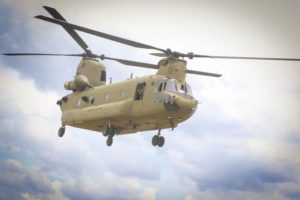
Army Secretary Mark Esper on Friday acknowledged resistance from lawmakers and the industrial base on programmatic cuts included in the service’s fiscal year 2020 budget request, telling reporters that specific pushback has focused on halting CH-47 Chinook Block II upgrades. Esper, during a discussion at the Atlantic Council, reiterated the Army is asking its rotorcraft industry base to begin thinking of future heavy vertical lift solutions that will be better suited to “survive against robust air defenses” in a potential…

 By
By 











